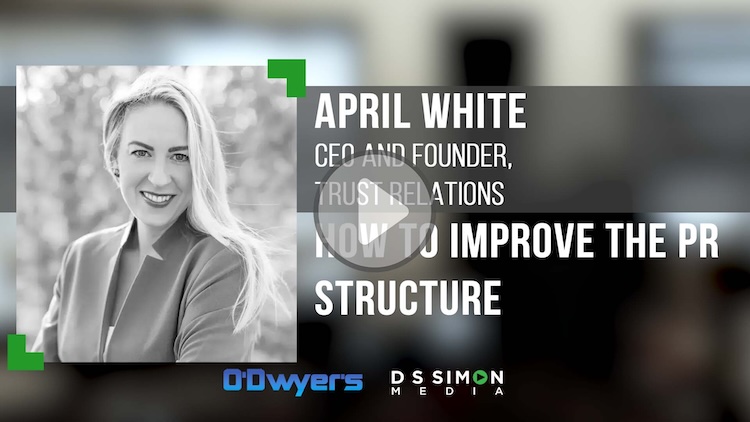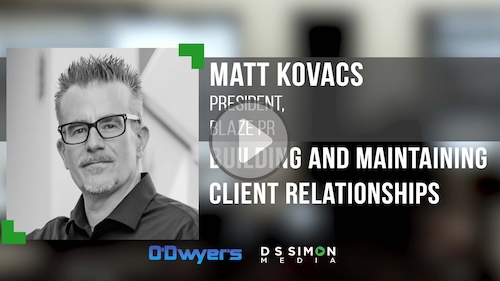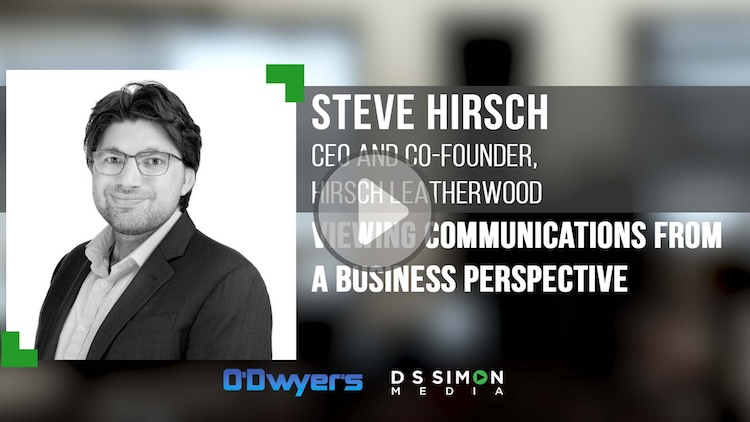 Alex Stanton Alex Stanton |
We're all emerging from two long years of COVID-related impacts and from a period when communications proved to be an even more important resource for organizations in their engagement with team members, business partners, customers and other key stakeholders.
It's also been a busy time for balancing the demands of work life and home life, and this has created challenges in finding the time and resources to do strategic re-assessments of reputational risks and opportunities. So, when better to do this than spring, a time of renewal and cleaning out winter clutter to make room for focus on new growth opportunities?
Too often, reputational risks are addressed only once a crisis occurs. Despite the best intentions, once the metaphorical fire has been put out, organizations tend to breathe a sigh of relief, get back to business as usual and put off dedicating the time and resources to address potential future vulnerabilities.
That's why "now" is the right time for communications leaders to conduct a "reputational audit" of their organizations, to identify and address potential negative exposure to their earned reputation and/or value proposition in today's difficult environment. And in the process, to make plans for amplifying attention on the positive things the organization does to make a difference.
| This article is featured in O'Dwyer's May '22 PR Firm Rankings Magazine (view PDF version) |
In our experience, every communications leader has an innate sense of where the real risks reside and at least a running start on how best to address them. Part of this "sixth sense" is a nagging recognition that they haven't done enough to prepare their organizations to address these downside risks or to promote the positive contributions that would partially offset these negative perceptions.
Here are some thoughts on how you might get started on this initiative:
Conduct scenario planning around your five or six biggest potential reputation risks. You know what they are. These are the things that could really undermine the confidence that your employees, customers, regulators, suppliers and other key audiences have in your organization and its leadership. The damage from these can be temporary or permanent, but you know they are things that will stick. Corners you cut to survive or thrive during COVID? Executive attitude issues? Departures from sales or service practices the business community or society would expect you to live up to? Use of technology in ways that might disappoint outside observers?
Look in the rearview mirror to examine the last two years of media coverage and social channel activity to really evaluate any negative stories and/or accusations about the company. This look back, outside of the stress and emotion of the moment, tends to enlighten future responses. Was your messaging on point and effective? What could have been done better? Are there systemic issues or roadblocks in how your organization activates and responds that could still be better? How effective have you been since that time in telling the positive side of your story on those issues?
Re-examine your responsibilities matrix and protocols for timely handling of media inquiries and for monitoring relevant reporter activity on social channels. Any adjustments needed to reflect changes or geographic shifts in your business operations? What about staff changes or alterations in hybrid work schedules and operations? Who are key influencers inside the organization whose opinions shape employee attitudes?
Examine ESG communications practices to keep pace with a fast-moving and high profile business area. A decade ago, ESG, if talked about at all, was "set it and forget it"—just stating you had a policy was often good enough for investors, employees, and business partners. Today, ESG receives more scrutiny from more groups than almost anything else your company does. There is no shortage of potential criticism for overstating your contributions or greenwashing. Is your organization living up to the principles and commitments you espouse in your ESG communications? Where can improvements be made? What accomplishments should be recognized and highlighted, and where is it better not to try to claim credit?
Review social media policies platform-by-platform to try to address problems before they start. Social media is something you can't control, but you can hope to contain it. If you haven't updated your social media guidelines for employees with respect to what they should and should not post on their personal accounts regarding your organization, this is an opportune juncture to do so. Do gaps exist between guidelines for corporate sites and what's asked of employees? Are you paying appropriate attention to the activity of senior executives who are on social and who have wide networks and meaningful connections (including reporters)?
Re-evaluate your philanthropy to reflect a post-COVID environment. You've faced unprecedented demand for support from community partners to help them navigate the impact of the pandemic on the people they serve and maybe added new partners to address unmet needs. Now is a good time to re-evaluate the go-forward potential of those partnerships to generate real impact in the community while also contributing to your company's trust bank with important stakeholders. Are you backing causes that are relevant today? Are your employees fully aware of and engaged in your charitable work? Are you getting appropriate credit for your good works?
Giving attention to business risks and creating plans to address them during springtime will allow you to focus the rest of the year on communicating the good news of your organization, knowing you have a solid foundation and are ready for whatever crises may come your way.
***
Alex Stanton is CEO of Stanton, a communications firm with offices in New York and the San Francisco Bay Area. He can be reached at [email protected].










 Have a comment? Send it to
Have a comment? Send it to 
No comments have been submitted for this story yet.